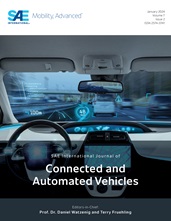Impact of Positioning Uncertainty on Connected and Automated Vehicle Applications
- Features
- Content
- Many Connected and Automated Vehicle (CAV) applications assume that highly accurate positioning is always available. However, this is not the case in many real-life situations (e.g., when a satellite-based navigation system is used for positioning in urban canyons). Furthermore, very little research has been conducted to evaluate the impacts of position accuracy on CAV applications at the traffic level. The objective of this article is to investigate the positioning errors that could be tolerated by a sample of CAV applications. Toward this end, we (1) perform a general analysis of the positioning requirements of selected safety-, mobility- and environmental-focused applications and (2) examine in greater detail the effect of positioning errors on two representative CAV applications, Eco-Approach and Departure at Signalized Intersections (EAD) and High-Speed Differential Warning (HSDW). The results of (1) indicate that lane-level positioning accuracy is sufficient to enable most CAV applications. Regarding (2), simulation results suggest that the EAD application can tolerate position errors up to 20 m when approaching the intersection. However, errors under 5 m are sufficient to significantly degrade the performance of the HSDW. These results suggest that CAV applications are sensitive to position errors and should be designed accordingly when the positioning system may not always meet the accuracy requirements.
- Pages
- 14
- Citation
- Williams, N., Darian, P., Wu, G., Closas, P. et al., "Impact of Positioning Uncertainty on Connected and Automated Vehicle Applications," SAE Int. J. CAV 6(2):155-168, 2023, https://doi.org/10.4271/12-06-02-0010.
